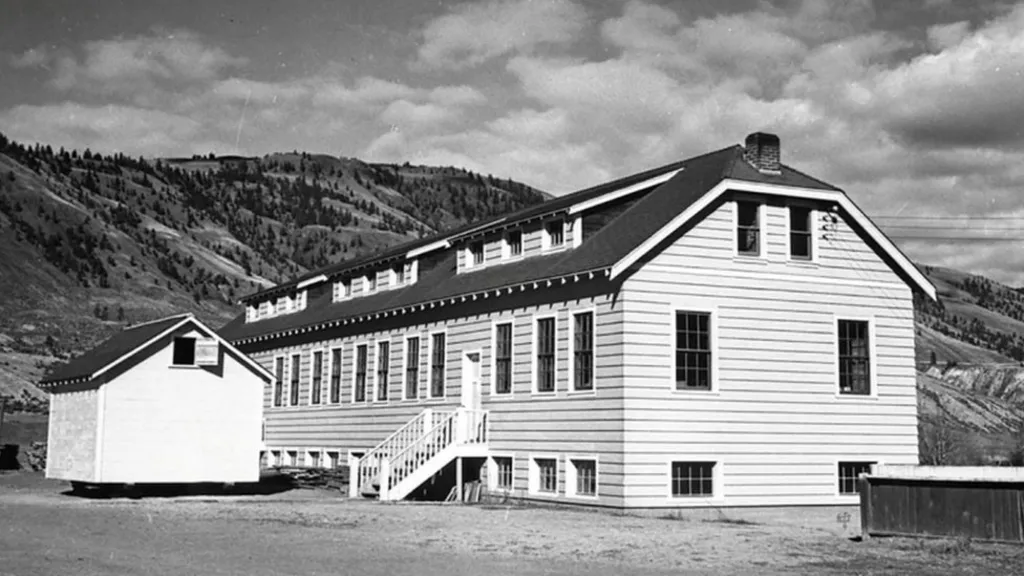The Kamloops Indian Residential School was one of the numerous institutions established under the Canadian government’s policy of assimilating Indigenous children into Euro-Canadian culture. These residential schools operated from the late 19th century until the late 20th century, with the Kamloops school itself functioning from 1890 to 1978. The primary objective of these schools was to erode Indigenous cultural identities and replace them with Canadian Eurocentric norms. This was achieved through enforced separation of children from their families, prohibiting the use of Indigenous languages, and inculcating Christian beliefs.
The conditions within these institutions were notoriously harsh. Children were subjected to physical, emotional, and sexual abuse, while neglect and malnutrition were commonplace. These schools left a devastating legacy, contributing to long-term trauma within Indigenous communities. The Truth and Reconciliation Commission of Canada (TRC) has documented extensive evidence of the atrocities committed in these institutions, emphasizing the systemic abuse and high mortality rates among the children.
On May 28th, 2021, a significant and somber discovery was made at the Kamloops Indian Residential School site by the Tk’emlúps te Secwépemc First Nation. Using ground-penetrating radar technology, they uncovered the remains of 215 children in unmarked graves. This discovery brought to light the grim reality of the residential school system, which many survivors had long reported but had not been fully acknowledged on this scale. The immediate emotional and cultural impact on the Indigenous community was profound, as it stirred collective grief and rekindled the painful memories of the past.
The discovery on May 28th, 2021, underscored the importance of acknowledging and addressing the historical injustices faced by Indigenous peoples in Canada. It prompted nationwide and international calls for further investigations into other residential school sites and for the Canadian government to take concrete actions towards reconciliation. The event also highlighted the necessity for educational reforms to ensure that the dark history of residential schools is adequately taught and remembered. For further reading, the TRC’s final report and historical documents available through Library and Archives Canada offer comprehensive insights into the residential school system and its lasting impact.
Impact and Calls for Action
The discovery of a mass grave at Kamloops Indian Residential School on 28th May 2021 has had profound consequences for Canadian society and the global community. Indigenous leaders expressed deep sorrow and outrage, emphasizing the need for immediate action and genuine reconciliation. The Canadian government, acknowledging the gravity of this revelation, issued statements of sorrow and solidarity, renewing commitments to address historical and ongoing injustices faced by Indigenous peoples.
Public reaction was swift and impassioned, with many Canadians joining in calls for accountability and systemic change. Vigils, memorials, and public demonstrations across the country underscored the collective grief and the urgent demand for justice. This tragic discovery has further highlighted the importance of the Truth and Reconciliation Commission of Canada’s calls to action, which outline concrete steps towards healing and reconciliation.
Efforts to address the abuses at residential schools have intensified. Legal and moral responsibilities are being scrutinized, with increasing pressure on institutions and individuals involved to acknowledge their roles in these historical injustices. The preservation of the memory of the 215 children found at Kamloops is crucial to preventing future atrocities. This involves not only commemorating the lives lost but also educating the public about the history and consequences of residential schools.
The role of the media has been significant in bringing this issue to the forefront. Extensive coverage has ensured that the discovery remains a topic of national and international discourse. Global responses have varied from expressions of solidarity to calls for similar investigations in other countries with histories of residential or boarding schools. This international attention underscores the universal relevance of addressing historical injustices and promoting human rights.
For those seeking to learn more, several resources are available. News articles, governmental statements, and advocacy groups’ websites provide valuable insights and updates on ongoing efforts. Engaging with these materials offers a deeper understanding of the impact of the Kamloops discovery and the broader movement towards truth and reconciliation.

